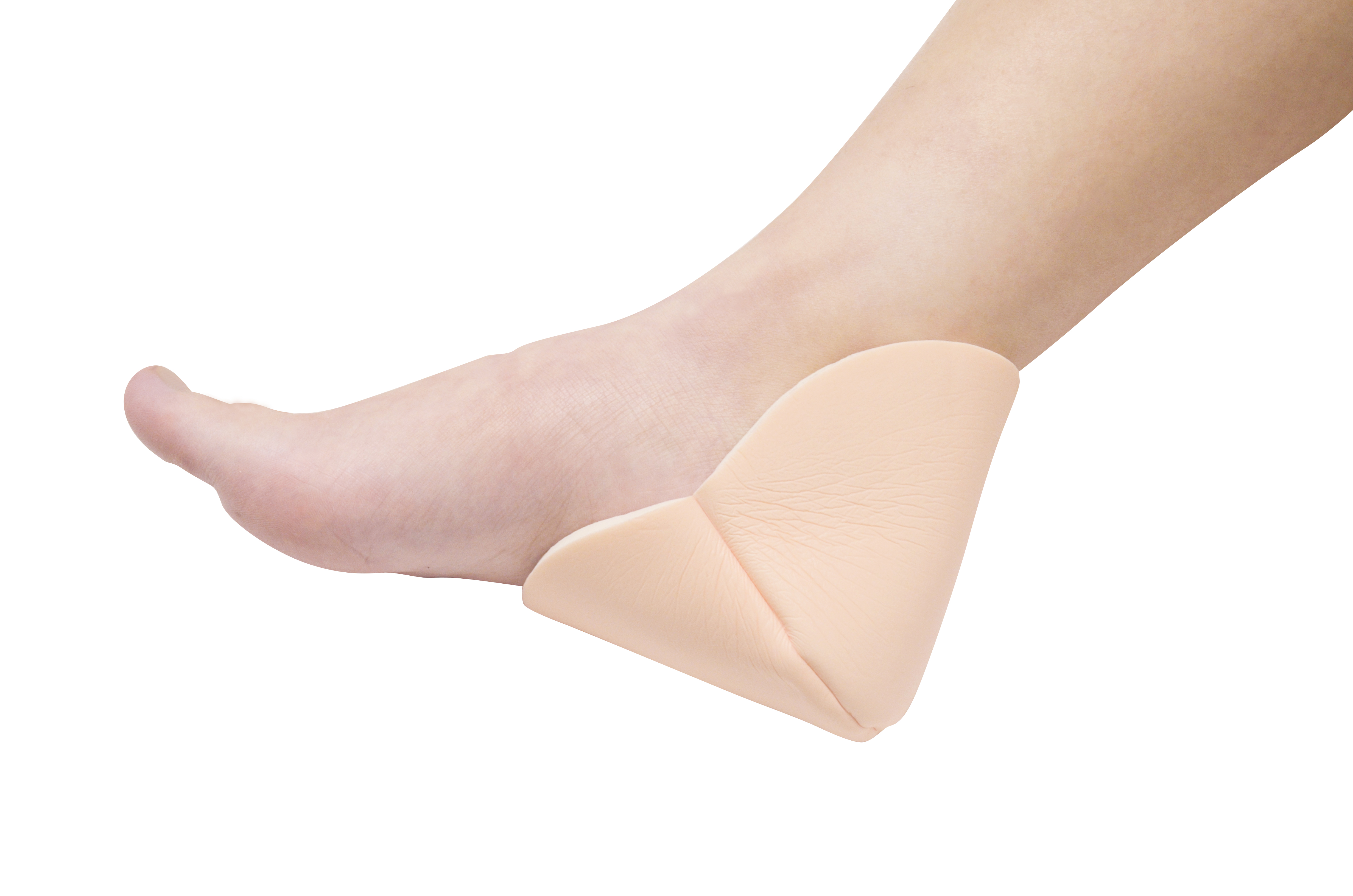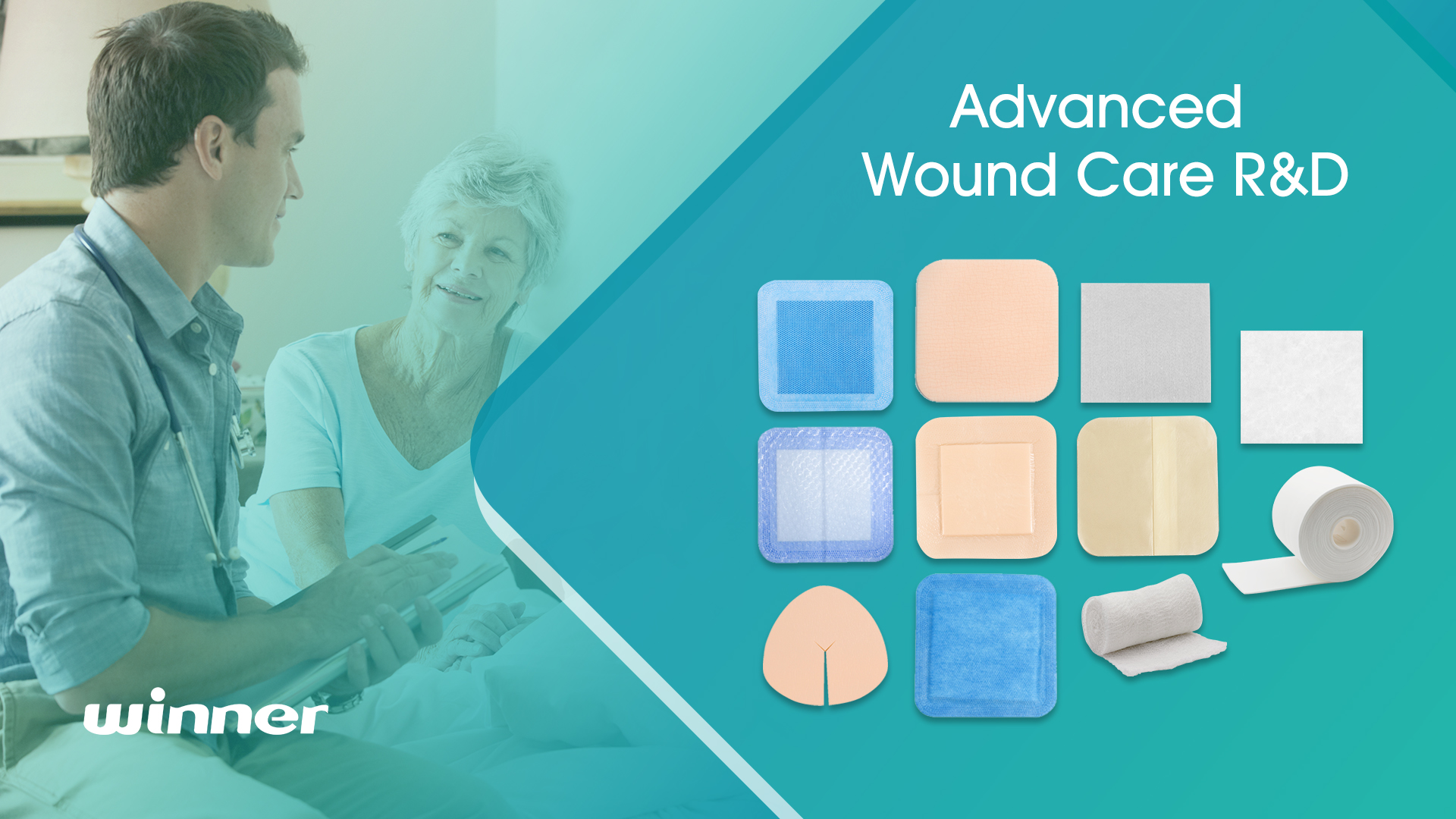10/01/2024
По запросу:Победитель конкурса медицинских наук
 10221
10221

Diabetes foot ulcers (DFUs) refer to the infection, ulcer or tissue destruction of the feet of patients diagnosed with diabetes, usually accompanied by lower limb neuropathy and (or) peripheral arterial disease. Improper treatment of diabetes foot wounds will affect daily life and endanger health. That is why choosing advanced wound care therapies is crucial for diabetic foot patients.
Different types of advanced wound dressings are key to treating diabetic foot. It not only promotes healing and prevents infection but also maximizes patient comfort, positively impacts wound management, and improves patients' quality of life. Read ahead as we explore the benefits of these wound dressings and how patients can use them for a better and faster recovery.

Benefits of Wound Dressings in Healing Diabetic Foot Ulcers
Persistent non-healing of wounds is an important cause of amputation and even death in diabetic foot patients, so wound dressings are apt for promoting and managing the process before it evolves into a life hazard.
Research has shown that compared to treatment in a dry environment, wet or moist wound treatment can prevent dehydration and enhance angiogenesis and collagen synthesis. Moreover, in moist environments, epithelial cell regeneration and scar reduction are relatively simpler, thus accelerating wound healing.[1] Advanced wound dressings utilize this theory, and this modern new type of dressing provides an environment conducive to wound healing rather than just isolating the wound.
Step-by-Step Guide to Different Grades of Wound Care Solutions
DFUs are a common occurrence in diabetes (type 1 and type 2), with an average incidence of 34%.[2] If left untreated, it may lead to severe consequences. However, appropriate wound care solutions for various DFU grades can help avoid this risk. The following are the course and coping methods for diabetic foot:
1. Grade 0
In grade 0 DFUs, patients' skin remains intact and free of visible lesions. However, bony deformities can result in "foot at risk" — a condition that indicates the coming complications that need to be measured. Advanced wound dressings are essential for grade 0 DFUs, and patients can control the situation by:
l Use silicone PHMB foam dressing as an auxiliary dressing or covering dressing for packed wounds.
l Protective barrier wipe helps form a protective film that can reduce friction when removing tapes and films.
l Using hydroloid dressing to address mild to moderate exuding wounds.
l Foam dressing heel provides cushioning and protection for the heel, absorbing exudate.
In addition, patients can also wear loose and comfortable shoes and keep the skin clean, dry, and moisturized to reduce early impacts.
2. Grade 1
With grade 1 DFUs, patients' feet may experience localized redness with visible skin ulcers. They are superficial wounds without subcutaneous tissue damage. In addition to the products used at grade 0, the following are also helpful:
l Foam dressing with border helps absorb exudate from wounds to prevent secondary infections.
l Bordered silicone foam dressing with SAF can absorb exudate and reduce peri-wound maceration.
l Foam roll stock has the characteristic of rapid absorption, helping to treat wounds
3. Grade 2
Grade 2 ulcers are deeper, with skin damage involving subcutaneous tissue. They appear reddish but do not have an abscess or bone infection. Some helpful and advanced wound dressings to help cure these ulcers are:
l Protective barrier wipe
l Silicone PHMB foam dressing
l Foam dressing with border
l Bordered silicone foam dressing with SAF
l CMC gelling fiber dressing helps treat chronic and acute wounds with moderate to severe exudation, maintaining the best moist healing environment for the wound.
l Super absorbent dressing absorbs and retains exudate, preventing bacteria from entering the wound.
l Silver alginate dressing absorbs exudate and reduces dressing change frequency.
4. Grade 3
Grade 3 DFUs can cause osteomyelitis or abscess formation, indicating inflammation and damage to the underlying bone tissue. The situation also involves full-thickness skin loss with visible subcutaneous wounds. Patients can use a few advanced wound dressings to limit the infection when it's in the initial stages. They include:
l Antimicrobial super sponge dressing
l Silver alginate dressing
l Antimicrobial gauze sponge dressing
l Super absorbent dressing
l CMC gelling fiber dressing
l Protective barrier wipe
5. Grade 4
Grade 4 DFUs refer to partial foot gangrene, where the infection spreads to muscles, bones, or tendons. The yellowish, dead cells accumulate over the wound and bring about severe skin loss in the infected area.
It's challenging to recover from grade 4 DFUs, but patients can avoid further complications with proper care and maintenance of the wound. Consider the following advanced wound dressings to address the issue.
l Silver alginate dressing
l Silicone Ag foam dressing
l Super absorbent dressing
l CMC gelling fiber dressing
l Bordered silicone foam dressing with SAF

6. Grade 5
In grade 5 DFUs, the thick and dry dead cells cover the entire base, causing the skin to turn different colours, such as tan, brown, yellow, or black. We can also refer to it as whole foot gangrene. This stage of wounds demands special attention. It is recommended that patients visit doctors as early as possible.
Advanced Wound Care Solutions from Winner Medical
A reliable and effective wound care solution is a better option for patients with diabetic foot ulcers. Winner Medical is the leading manufacturer of advanced wound care products with 30 years of experience in the field. We offer the highest-quality, advanced wound dressings, such as CMC gelling fiber dressing, super absorbent dressing and silicon foam dressing. These products are carefully designed to promote healing and stave off serious infections.
Our advanced dressings mentioned above play an important role in promoting wound healing. Apart from advanced wound dressings, always remember that adequate wound debridement, appropriate systemic antibiotic therapy and frequent (daily) dressing changes are also significant to healing DFUs. A complete assessment of the patient is needed before deciding on the treatment, including:
l Type and grade of the ulcer
l Pain and tolerance level
l Complexity of the wound

Conclusion
For patients with diabetic foot, timely disease intervention, to a certain extent, determines the complexity and recovery effect of subsequent treatment. The nursing plans required for different stages of diabetic foot are not consistent. Therefore, continuous disease monitoring and the use of advanced wound dressings are necessary. Contact us for more diabetic foot solutions to reduce foot pain.
References
[1] Clinical Impact Upon Wound Healing and Inflammation in Moist, Wet, and Dry Environments. Available at: https://www.ncbi.nlm.nih.gov/pmc/articles/PMC3842869/ (Accessed: 5 December 2023)
[2] Management of diabetic foot ulcers. Available at: https://www.uptodate.com/contents/management-of-diabetic-foot-ulcers (Accessed: 5 December 2023)